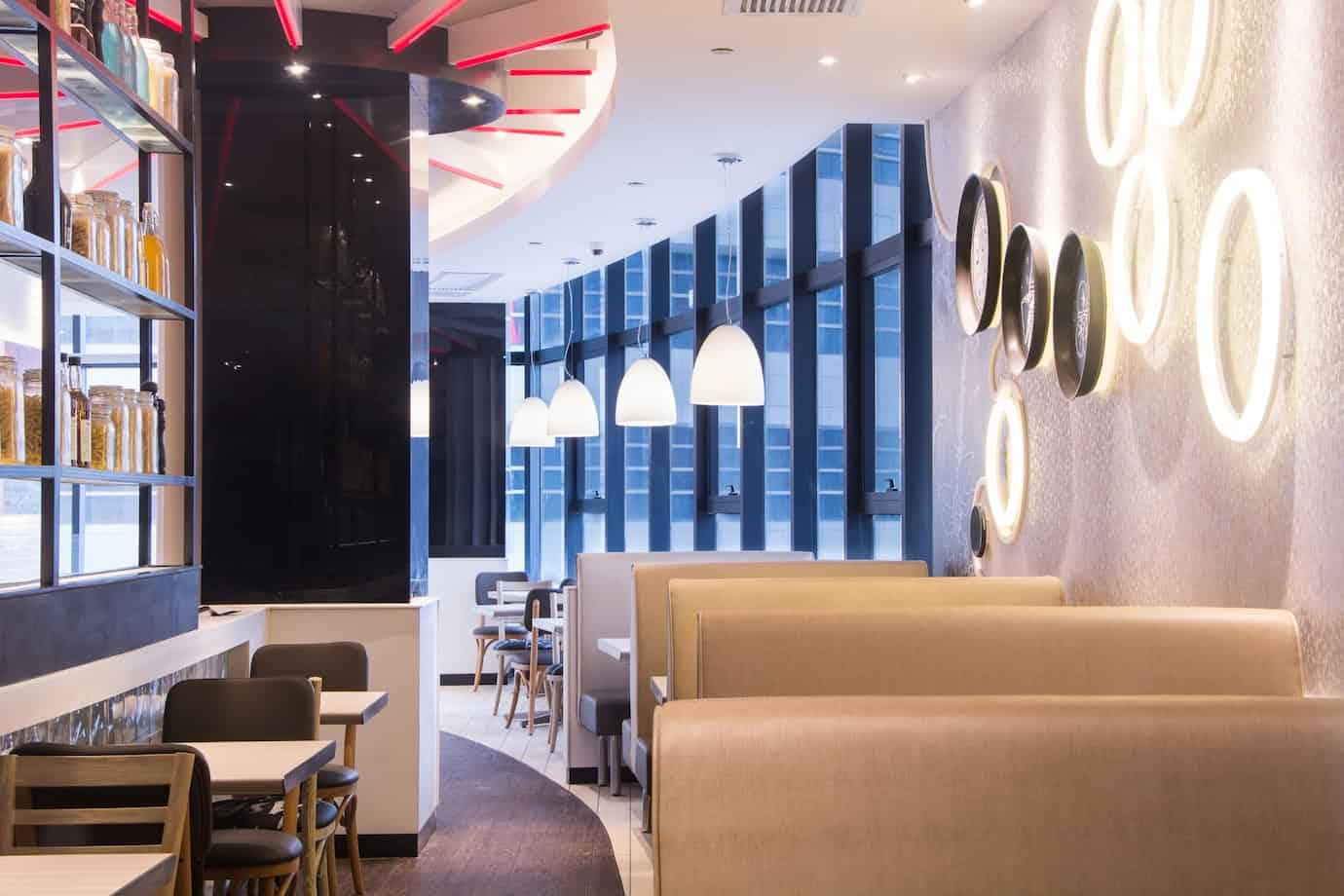If you are a restaurant owner, it is critical that you choose the right lighting for your establishment. Commercial restaurant kitchen lighting design can make or break your business. You want lighting that will create a particular mood for your customers, and one that matches the overall interior of your space. Consciously or not, people are affected by even minor differences in lighting, as well as how well any given lighting arrangement suits the space that it is installed in. To be truly successful in your business, it is essential that you familiarize yourself with the fundamental components of proper lighting so that you can find the right lighting design company for your needs.


A critical factor in choosing lighting for restaurant design is the psychology of different types of clientele. Restaurant lighting types are divided into three groups, depending on the effect they have on customers’ moods. Ambient lighting is a general term that dictates what an overall lighting appearance will look like. Low lighting is used for places where people are expected to linger and sit closer together, whereas brighter lights are placed in places that are intended to create more active, vibrant moods.
The other two categories of lighting are task lighting and accent lighting. Task lighting is lighting intended to help people perform specific tasks where they need to be able to see very well. It is placed in particular areas close to where the tasks will be performed.
Accent lighting is also placed in particular areas, but serves more of an aesthetic purpose than a practical one. Accent lighting is often used around pieces of art to help illuminate their features. It is commonly used in high-class restaurants with fancy interiors to emphasize particularly special designs or paintings on the walls.
Even when designing spaces to include light fixtures, it is essential to include as much natural light as possible. Natural light both reduces the need to spend money on artificial light, and it also has a positive effect on people’s moods. The addition of as many windows as possible to complement artificial light is a welcome addition to any restaurant.
Hanging pendants are a near-universal feature of restaurants everywhere. They come in many different styles and sizes and allow for easy installation. Hanging pendants often have sleek designs that highlight the themes of modern restaurants.
Options for chandeliers go far beyond the traditional old-style palace type. These days, chandeliers are available in a wide range of types to suit restaurants of all sorts.
Ceiling restaurant lighting design is a common type of lighting in restaurants. Track lighting can be a very effective way to fully illuminate a large space without having the light itself be the center of focus. Track lighting runs across ceilings unobtrusively and allows restaurant owners to highlight other parts of the restaurant. They can run either in straight lines, or in circles, as a restaurant’s needs dictate.
There are several different types of accent lighting that can be incorporated into restaurant spaces. Wall accents provide lighting in particular places to draw people’s attention to selected features of a restaurant. Candlelight is used in settings intended to create a romantic atmosphere for couples. There are a variety of types that give restaurants different levels of intimacy.
A restaurant’s most important feature is its menu. Therefore, lights should be installed near a hanging menu so that it can be read as easily as possible. Wall lights can highlight a menu unobtrusively and allow customers to read it without difficulty. It is a useful addition both for practical purposes, and in adding class to a restaurant’s overall appearance.
In making the decision of what type of lighting to use, LED is the clear favorite these days. Using far less energy than other traditional lighting sources, and also providing equal amounts of light, LED is quickly taking over as the world’s preferred lighting source. In places like restaurants that need to stay illuminated all day long, there is no question that this is the smarter choice. Restaurants that haven’t yet made the switch to LED should do so as soon as possible, so choose your lighting design company wisely.
Lighting should be easily manageable and placed in a position that illuminates the right parts of a room. Installing smart lighting that turns on and off when you want it to, and also dims when you want it to will make your rooms more functional and reduce your energy bills. Kitchens must be sufficiently lit to allow cooks to do their jobs, and dining areas should contain the correct amount of light for whatever mood the restaurateur is trying to create.
Each part of a restaurant demands its own type of lighting design.
Depending on the goal of a restaurant and which rooms are being designed, different design elements are used to create any number of moods and appearances.
Any given restaurant bar lighting design choices are up to the owner. They can be bright and span the entire length of a dining area, or low and sparse, depending on the restaurant’s theme and purpose. What is important is that lighting choices match the other elements in the restaurant and work together to create the desired atmosphere. Customers react positively to smart design, so it pays to research these characteristics as carefully as possible.
This website uses cookies.